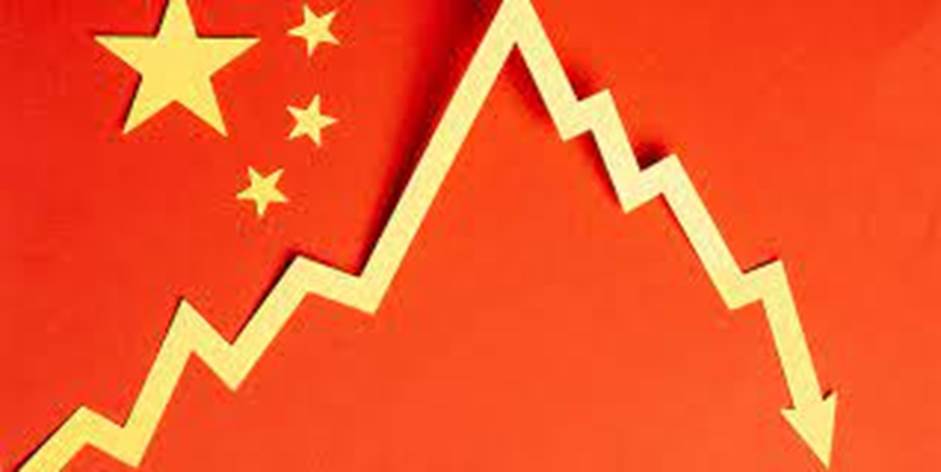
Instead of rapid growth continuing, the last decade has seen China slowdown. Growth is now only 3-4% per year and is predicted to fall even further - OMFIF
China Slows down
By Nayyer Ali MD

From 1980 to 2010 China underwent a stunning transformation as it lifted up from one of the most impoverished nations on Earth to an economic giant with many predicting it would surpass even the US as the world’s largest economy. But in the last decade, the China model has gradually slowed and finally has stalled out, with huge implications for who will be the dominant power in the 21 st century.
China’s growth was driven by its shift to capitalism from the Maoist communism it had suffered under since the Chinese Communist Party seized power in a civil war in 1949. Mao’s rule was marked by one massive failure after another, the largest was the Great Leap Forward. This was a deeply misguided attempt to force Chinese peasants to turn their villages into centers of heavy industry in the early 1960’s. The collapse of farming that resulted created a massive famine that took the lives of up to 50 million Chinese, before Mao gave up on his scheme.
But starting around 1980, and accelerating in the 1990’s, China opened its economy to foreign investors and steadily became the workshop of the world, with a massive expansion of low tech and then medium tech manufacturing. Tens of millions of Chinese peasants moved to the cities to begin working in these factories. While pay was still low by Western standards, it was far better than life in the countryside. China’s economy grew at a breakneck pace, sometimes more than 10% in a single year. Over the course of the last several decades, hundreds of millions of Chinese were lifted out of absolute poverty.
The Chinese colossus looked unstoppable. If it continued to grow at 7-10% per year, it was just a matter of time before China overtook the US as the world’s largest economy. Many observers breathlessly speculated that China would topple the US as the dominant global power as surely as day follows night.
But this prediction has clearly failed. Instead of rapid growth continuing, the last decade has seen China slowdown. Growth is now only 3-4% per year and is predicted to fall even further. China’s working age population peaked around 2015, and so it can no longer rely on a rapidly growing work force to fuel economic growth.
The Chinese growth model was based on massive investment paid for by economic policies that forced Chinese to save and to channel those savings to companies that would invest. While all economies need investment to pay for economic growth, China has a very unbalanced approach to this. Most economies invest about 20-25% of GDP, with the rest going to consumption. China has maintained investment rates of 40-45% of GDP and done so by restricting household consumption. This massive investment has paid for high-speed rails, new airports, homes and apartments, roads, power plants, bridges, and many other such projects.
The problem for China is that it has run out of useful investments. Much of the investment is going to homes and apartments that sit empty and bridges to nowhere. This useless investment explains why China is no longer getting the high growth rates it used to. Major Chinese real estate firms are going bankrupt. For China, this slowing growth is a huge problem. The only solution is to reduce investment to 25% of GDP and shift the economy into consumption mode. This will result in very slow growth of GDP but significantly higher standard of living for the average Chinese.
Japan experienced decades of rapid growth that eventually slowed down around 1990. Since then, it has grown much more slowly. The big difference is that Japan slowed down when its GDP per person had reached 60% of the American level, while China is slowing down after only reaching about 25% of the US level. The richest Chinese province is still poorer than the poorest American state. The gleaming skyscrapers of Shanghai obscure the reality that China is still a rather poor country by Western standards.
The Chinese people have themselves become extremely pessimistic about the future. Chinese women have basically gone on a baby strike, the most tangible way in which young people can make clear their dark view of their own prospects. New Chinese college graduates are now struggling to find good employment. China’s birthrate has collapsed from 17 million babies per year back in 2015 to just 9 million in 2022. This amounts to only about 1 baby per lifetime for each woman, less than half the number needed to keep the population stable. China was passed by India this last year and is no longer the world’s most populous country. In the next 30 years, the working age population is going to decline by 200 million people. How is China going to pay the pensions of the massive number of elderly on the backs of a much smaller working population? China cannot replace its missing millions with immigration, it is not a country that is willing to accept tens of millions from Africa. The Chinese Communist Party has led China into a dead end.
For the world, this means that this century will still be dominated by American power. While China’s population is expected to decline to 700 million by 2100, the US is expected to rise to 400 million. But what makes US power so dominant is not just its own economy, but the fact that it has such a wide alliance system. The US can rely on Britain, Australia, and Canada, along with NATO in Europe, and Japan and South Korea and Taiwan in Asia, and Israel and Saudi Arabia in the Middle East. Other nations that are not as close to the US, but perceive China as a threat include the Philippines, Indonesia, India, and Vietnam. Vietnam is actually now looking to buy American military equipment. China’s junior partner, Russia, is getting knocked down by the war in Ukraine and has lost any claim it has to great power status.
The story of China’s economic miracle is over. It now faces very difficult choices, and its dictatorship of the Communist Party has concentrated power in the hands of Xi Jinping. Xi has been unable to handle the challenges of the last decade, and with him in power for the foreseeable future, it is hard to paint a positive picture of what awaits the Chinese people.

